|
| |
For Galician people, as for every other country in the world,
language is the way in which we interpret and express reality and culture. Language is the
basis for our experiences, customs, celebrations, art, music... as one of our best
thinkers said: "a language is more than a work of art, it is an unending source of
works of art".
Galician and Portuguese are in the theory the very same language,
but they are in practice a bit different. Centuries of mutual isolament and artificial
differences have been caused by the Spanish frontier, creating two different cultures:
more Latin the Portuguese, more Atlantic the Galician.
Galician is Galicia's own language thanks to a people who have
managed to maintain our language over the centuries as a sign of collective identity, in
spite of the political obstacles placed by Spain.
Nowadays Galician is spoken by more than 3 million people,
both in Galicia and its borderings (occident of Asturias, León and Zamora) and in several
countries where Galician people emigrated.
If you want, you can go to the Galician today section and find out about the
levels of usage for Galician, the attitudes of the Galician-speakers towards their
language and the extent to which it has become normalized, starting off with a general
level and going on to deal with the spread of Galician
throughout the world.
Of all the languages spoken within the
multilingual Spanish State, except for Spanish itself, Galician is the only one spoken by
the majority of the inhabitants of its territory. Surveys carried out in recent decades
show that in practice all the Galician population speaks Galician.
In spite of the historical circumstances, the
Galicians preserved their language. In rural areas, the people in general speak only
Galician and don't understand Spanish, whereas in the cities more Spanish is spoken, with
Galician being used as well. The linguistic territory of Galician is greater than its
administrative boundaries. It is also spoken in the border areas of Asturias, Leon and
Zamora, the neighbour provinces.
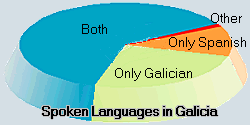 Thanks to the Sociolinguistic Map of Galicia (SLMG) which came out
in 1991, directed by the Sociolinguistics Seminary of the Royal Galician Academy, today a
whole set of up-to-date information is available to us concerning the situation our
language is and this should help us resolve questions related to language planning and
thus help direct the appropriate measures to be taken in order to increase the spread of
the Galician language. Thanks to the Sociolinguistic Map of Galicia (SLMG) which came out
in 1991, directed by the Sociolinguistics Seminary of the Royal Galician Academy, today a
whole set of up-to-date information is available to us concerning the situation our
language is and this should help us resolve questions related to language planning and
thus help direct the appropriate measures to be taken in order to increase the spread of
the Galician language.
We should point out that prior to the
publication of the SLMG, the only data available to us were the figures published in the
1991 census. The Autonomous Community of Galicia included in this census a number of
questions on the active and passive knowledge and use of the Galician language. This
survey shows that, of a total of 2,695,578 people, 2,445,000 understand Galician and
2,100,000 speak it usually.
Before 1,500 AD the Galician language have
contributed much to the building of the Spanish language, as for example all the
few words that in Spanish have a Celtic root came all, without exception, for the Galician
language which has conserved, no only the peculiarity of its phonetic, but also these
words and many others, in particular in the names of the back country.
Only two languages of the peninsula, the Galician-Portuguese and the
Spanish are internationally recognized. The other languages, the Catalonian and the Bask,
are only regional languages, with little chances to contribute on the scientific, economic
or politic planes, remaining only useful on the local cultural plane.
|
 It was the
thousands of men and women who had to leave their land either for economic or labour
reasons or for political reasons who laid the foundation of what Galician is now in the
world. This diaspora had several phases. The first was in the nineteenth century, when
thousands of Galicians left their homes to work as day labourers in Andalusia, Castile and
Portugal. It was the
thousands of men and women who had to leave their land either for economic or labour
reasons or for political reasons who laid the foundation of what Galician is now in the
world. This diaspora had several phases. The first was in the nineteenth century, when
thousands of Galicians left their homes to work as day labourers in Andalusia, Castile and
Portugal.
Between 1860 and 1936 most of the Galician exodus ended up in Cuba, Argentina and Brazil.
This emigration was mostly of men who left behind their wives and children, "the
widows of the living and the widows of the dead" in the words of Rosalía de Castro.
It has been calculated that over half a million people left Galicia during this period.
After the Civil War emigration was not permitted for several years -except for political
exiles- but in the fifties emigration to Argentina started up again as well as to
Venezuela. At the same time emigrants started leaving Galicia for Central Europe -the
United Kingdom, France, Germany and Switzerland- and the main industrial centres of Spain
-Catalonia, the Basque country and Madrid-. This process slowed down at the beginning of
the seventies.
The cultural contribution of the Galician emigrants was not as great at first as the
strength of the Galician associations in the different South American capitals with their
mutual benefit and self-help approach.
 Their work was seen in the
support given to the members of the "Irmandades" and in their contribution to
the scientific work of the Seminar for Galician Studies. At the beginning of the century
the Academia Galega was created in Cuba by Curros Enríquez among others. Their work was seen in the
support given to the members of the "Irmandades" and in their contribution to
the scientific work of the Seminar for Galician Studies. At the beginning of the century
the Academia Galega was created in Cuba by Curros Enríquez among others.
With the arrival of the political exiles, cultural and political activity increased in
continuation of the work carried out in Galicia before the war. These people received the
open support of the emigrants who had been there longer. Cultural societies were founded
in several countries, especially in South America and Mexico; the "Padroado da
Cultura Galexa" in Madrid was created in 1953 and became the centre for the promotion
of cultural activities. In Argentina the "Instituto Arxentino da Cultra Galega"
was created as well as the "Consello de Galiza" of a political nature. Cultural
production was most extensive -radio programmes in Galician, lectures, books and journals
were published, etc.
The publishing houses created by the emigrants made possible the publication of their
literary and research works, political essays, classical works...
Journals became one of the commonest means of communication in Galician circles, as well
as certain newspapers. The following are a few of the many still existing: Galeuzka
(1954, Buenos Aires), Vieiros (1959, Mexico) and Galiza Emigrante.
Argentina played the role of spiritual capital of Galicia. An enormous amount of work was
done there by such great men as Castelao, Blanco Amor, Luis Seoane, Lorenzo Varela, Rafael
Dieste, Lois Tobío. Castelao produced his Os vellos non deben namorarse, the
poetic works of Curros and Rosalía de Castro were re-edited and the Revista Nós
and A Nosa Terra were kept going..
Radio was extensively used for the broadcasting of Galician cultural values and Galician
thinking. In Montevideo on 3 September 1950 the programme Sempre en Galiza went on
the air for the first time and continues today entirely in Galician. Luis Seoane promoted
other programmes in Argentina but these could not be broadcast for legal reasons.
Emigration towards Europe started in massive quantities in the sixties to meet the need
for labour in the European countries.
Switzerland, the United Kingdom and Germany were the main destinations of the Galician
emigrants, as well as Holland, Belgium and France.
Over the years many associations, "irmandades", and centres have been created
bringing together Galician emigrants. The basic objective of these groups was to protect
their members against the great difficulties they had to face in a foreign environment.
The list of Galician Centres and Casas de Galicia open today in Europe would be
interminable. Cultural activities for emigrants receive support at present from Galicia by
means of various arrangements such as the Agreement with the Munich Children's and Young
People's Library, the presence at European Fairs and the above-mentioned agreements with
the different universities and teaching centres.
Emigration within Spain was no less important although the numbers were smaller. The many
Centros Gallegos and Casas de Galicia throughout Spain carry out notable cultural
activities, constantly making known the Galician identity.
|
|
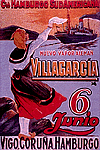
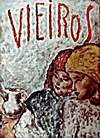
Magazine published by "Padroado da Cultura de México"
(Cultural Association in Mexico).
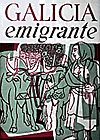
Galicians in exile carried out political, cultural, and publishing
activities.
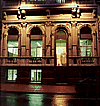
Houses of Galicia and Galician associations kept our traditions
alive.

|
|